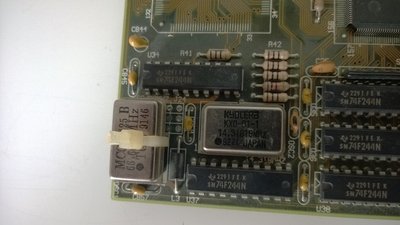First post, by McBierle
- Rank
- Member
Hello again!
Next Questions:
I have this 386-board and identified it as "Unidentified 386 CACHE MAINBOARD" http://www.uncreativelabs.de/th99/m/U-Z/32256.htm.
DX-33 works as it should. When i put in an Am386-DX40 it clocks at 33Mhz. As you can see JP24-26 are not there and the oscillator shows 66Mhz.
Do you think it is possible to put in 80Mhz oscillator and connect the jumper points as 40mhz, or is there more to do?
And why is JP26 not closed?
Any help/ideas?
Thanks!
